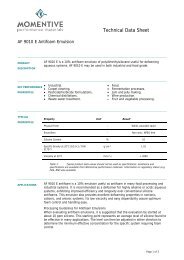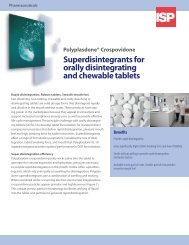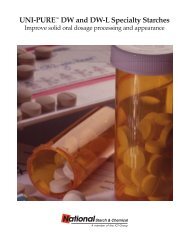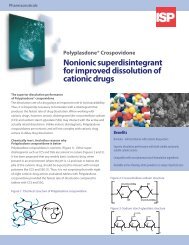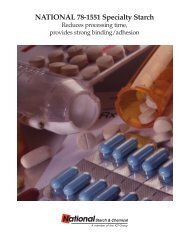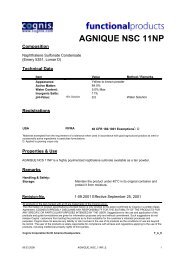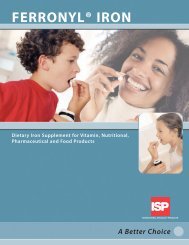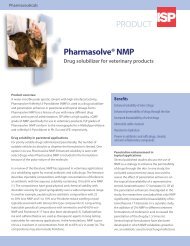Inert Lubricants Oils – Greases – Waxes - Anshul Life Sciences
Inert Lubricants Oils – Greases – Waxes - Anshul Life Sciences
Inert Lubricants Oils – Greases – Waxes - Anshul Life Sciences
Create successful ePaper yourself
Turn your PDF publications into a flip-book with our unique Google optimized e-Paper software.
Oxidizer <strong>Inert</strong>ness Tests<br />
Because of industry’s ever expanding use of strong oxidizing agents, many test procedures<br />
have been developed to determine the safety of lubricants in contact with these agents.<br />
The results of one method, ASTM G72 “Standard Test Method for Autogenous Ignition<br />
Temperature of Liquids and Solids in a High-Pressure Oxygen-Enriched Environment,” are<br />
given for several Halocarbon oils and greases in Table 1 (below). None of Halocarbon’s<br />
lubricants, including those with rust inhibitor, ignite throughout the entire testing range,<br />
exceeding 400°C (752°F) and 2,000 psig (13.9 MPa).<br />
Also in Table 1 are the results of a test similar to ASTM D2512 “Test for Compatibility of<br />
Materials with Liquid Oxygen (Impact Sensitivity Threshold Technique).” The apparatus<br />
used has upper limits in excess of the ASTM method. Again, none of Halocarbon’s products<br />
showed any sensitivity at the highest impact loading.<br />
Table 2 (below) shows how insensitive Halocarbon oils are to shock in the presence of 90%<br />
hydrogen peroxide and liquid oxygen. No sensitivity was detected with any treatment.<br />
Halocarbon lubricants have also been evaluated by the German Federal Institute for Materials<br />
Research and Testing (BAM) for lack of reactivity with gaseous oxygen under pressure.<br />
Table 1. Oxygen <strong>Inert</strong>ness Tests<br />
Autogenous<br />
Ignition Temp. 1<br />
(°C)<br />
Impact<br />
Sensitivity 2<br />
(foot-pounds)<br />
Halocarbon 4.2 >400 (752°F) 3 >114 3<br />
<strong>Oils</strong> 4.25 >400 >114<br />
56 >400 >114<br />
56S >400 >114<br />
700 >400 >114<br />
700S >400 >114<br />
HaloVac ® 100 >400 >114<br />
<strong>Oils</strong> 4 190 >400 >114<br />
Halocarbon 25-5S >400 >114<br />
<strong>Greases</strong> 25-5SI >400 >114<br />
25-10M >400 >114<br />
25-10MS >400 >114<br />
1. ASTM G72 "Standard Test Method for Autogenous Ignition Temperature of<br />
Liquids and Solids in a High-Pressure Oxygen-Enriched Environment".<br />
Table 2. Shock Sensitivity 1<br />
Oxidizer<br />
H 2<br />
0 2<br />
(90%) H 2<br />
0 2<br />
(90%) LOX<br />
Oxidizer/Oil<br />
8/1 None None —<br />
4/1 None None —<br />
2/1 None None —<br />
1/1 — — None<br />
Pretreatment<br />
Temp. 2 °F 160 70 -300<br />
°C 71.1 21 -184<br />
Test<br />
Temp. °F 70 70 -300<br />
°C 21 21 -184<br />
1. Tests run on a Picatinny Arsenal type impact tester (see Picatinny Technical<br />
Report 1401, Revision 1, 1950).<br />
2. Mixtures of Halocarbon oil and 90% H 2<br />
0 2<br />
held at constant temperature for 24<br />
hours prior to test.<br />
2. Similar to ASTM D2512 "Test for Compatibility of Materials with LIquid Oxygen<br />
(Impact Sensitivity Threshold Technique)". See Text.<br />
3. Upper limit of text.<br />
4. See Vacuum Pump Fluids, p. 22.<br />
back to Contents<br />
5



